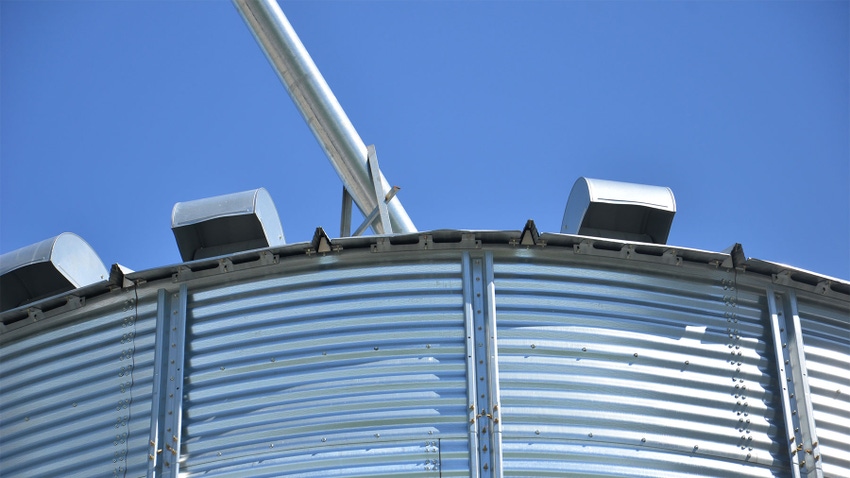
Grain in the bin is like money in the bank. “That is the most important thing you must realize,” says Greg Trame, director of technology sales for GSI. “Money in the bank is monitored and protected, and you need to pay attention to grain in storage as if there were hundreds of thousands of dollars in cash inside.”
If you plan to store corn into June or longer before selling it, then monitoring grain condition and managing it properly becomes critical, he says. Here are some discussion points that can improve your odds of keeping grain in good condition into late spring or early summer:
Warm up or keep cold? This is the first decision to make, Trame says. “Growers in certain parts of the country prefer to keep corn cold as temperatures warm up outside. We’ve seen that work well as long as you keep a couple principles in mind.”
First, be prepared for lots of condensation forming water droplets when you finally empty the bin during warm weather. Expect grain handling equipment to get wet when cold grain meets warm air. As long as you’re aware it will happen, you can handle it successfully.
“Second, once you break the seal and open a bin of cold corn, then the ideal thing is to haul out the whole bin,” Trame says. “If it’s a large bin and you can’t do that, then realize that you must aerate and manage corn remaining in the bin.”
Temperature. Many people in the central Midwest choose to warm grain up as spring approaches rather than leave it cold. “A good goal is keeping grain temperature within 10 to 15 degrees of the average daily temperature,” he says. “If grain is at 40 and the temperature outside averages 60, that’s a wider gap than you would like.”
Use fans to warm grain with ambient air. If you have an automatic aeration system, such as GrainVue from GSI, you can set it up to warm grain slowly for you. Even if you have such a system, it still pays to monitor grain quality yourself, Trame notes.
Moisture. If you know the moisture level of grain when it went into the bin in the fall, you can get a better handle on what to expect as you extend storage into warmer months.
“The standard recommendation for grain going into the bin in the fall is 15% if you’re going to sell by late winter,” Trame explains. “If you knew you were holding until early spring or summer, 14% moisture would have been preferable. If it went in over 15% and you didn’t get it dried down, you know you need to pay extra attention to it.”
Even if corn went in at 15% to 15.5%, grain in the lower part of the bin may be drier, he says. But unless you have moisture cables in the bin, you won’t have that information to help you manage now.
Fines. Did you core the bin to remove fines after harvest? “If you did, that helps when you decide to store grain longer,” Trame says. “Spoilage issues often start in the center of the bin because that is where fines accumulate. If you didn’t core a bin, then that is an added concern now.”
About the Author(s)
You May Also Like




